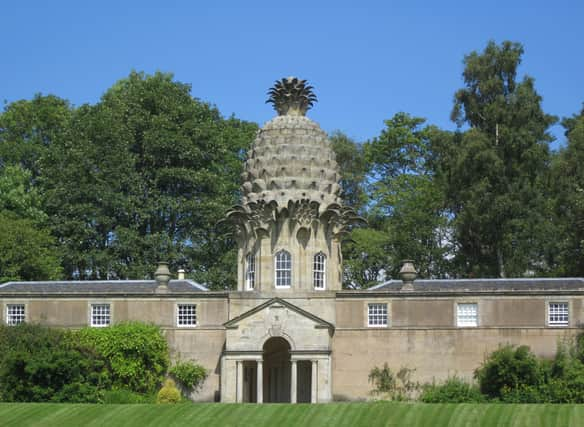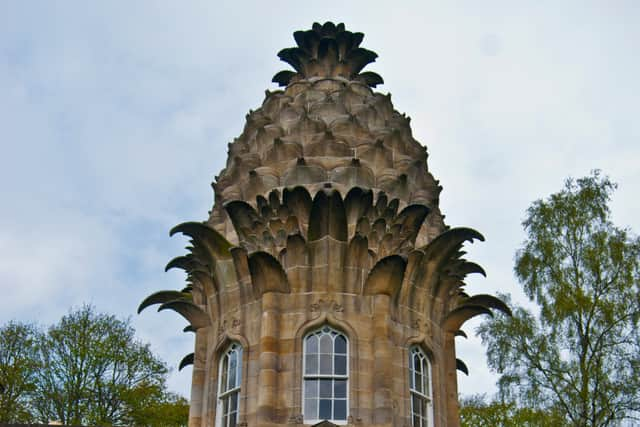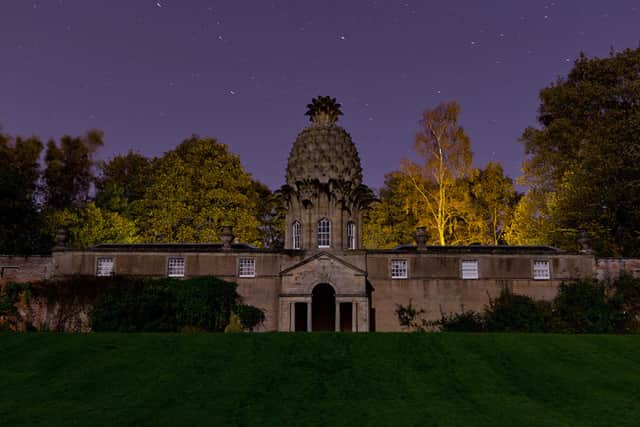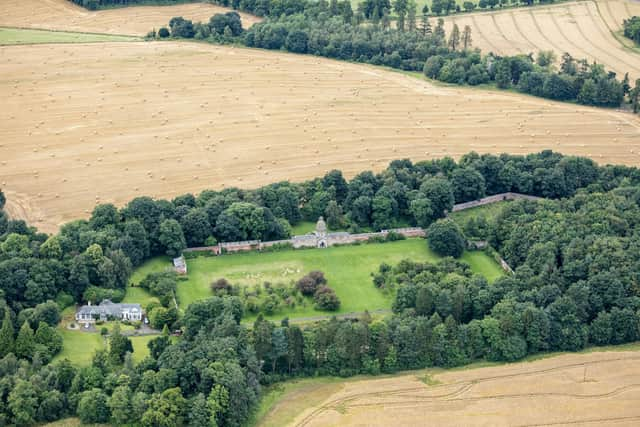Who lives in a pineapple? Dunmore Pineapple guide, the “Most Bizarre Building In Scotland”
This article contains affiliate links. We may earn a small commission on items purchased through this article, but that does not affect our editorial judgement.


Odd yet opulent, the Pineapple - built of the finest masonry - has been described as a ‘work of genius’ that never fails to inspire visitors. It was originally constructed for the Earl of Dunmore to serve as a summerhouse where he could luxuriate in the stunning vistas that envelop the estate. Other sources claim it was created as a birthday gift for his wife, Charlotte.
The extensive glasshouses in the walled garden once cultivated an array of unconventional fruits and vegetables and back then the pineapple was among the most exotic foods one could procure. Nowadays, this agriculture is not ongoing, but the grounds are still described as an ‘oasis for wildlife’ and benefit from the woodland that shelters them.
Advertisement
Hide AdAdvertisement
Hide AdAccording to the National Records of Scotland: “The first pineapple propagated in Scotland is attributed to James Justice in 1728.
“Justice was a principal clerk of the Court of Session, but his passion for gardening resulted in a ‘garden paradise’ created at Crighton House, just south of Edinburgh.”
It may shock some to know that the tropical treat had found its home here as early as then but it is indeed so and reflects the ‘pineapple frenzy’ of Great Britain back when the fruit was reserved for well-to-do types. The history of this unique building runs even deeper, however, as it also has ties to the War of Independence.
Here is a guide to the Dunmore Pineapple including its attractions, ownership and how it got here to begin with.


What is the Dunmore Pineapple?
The National Trust for Scotland (NTS) describes ‘the Pineapple’ as a “bizarre fruit-inspired building set within a woodland full of wildlife”. The folly is located in Dunmore Park near Airth village in Stirlingshire.
For those unfamiliar with that word, the Florence Griswold Museum explains: “Follies are garden buildings and structures designed to enhance and enliven the surrounding landscape.
“As structures designed purely for decorative beauty, not necessarily for a functional purpose, ‘follies’ received their name from this association to silliness and impracticality.”
The 18th century summerhouse presides over a walled garden and has a private garden at the back with stone bothies that were originally used to house the estate’s gardeners but can now be rented out by visitors.
Advertisement
Hide AdAdvertisement
Hide AdGiven the uniquely sculptured cupola (which is 37 feet high), the site was crowned “the most bizarre building in Scotland” in 1995.
History of the Dunmore Pineapple
Although the illustrious estate may remind you of the abode of one Spongebob Squarepants who also lives in a pineapple (albeit under the sea) this building predates his by over 300 years. The Dunmore Pineapple is the ‘brainchild’ of the 4th Earl of Dunmore (John Murray) who had it built by 1761.
While there is debate as to who the architect was, a few sources concur that it was Robert Mylne who had connections to Murray’s family.
At that time, the Dunmore estate was huge and an impressive manor house could be found in Elphinstone Pans. This preceded the building we now know as Dunmore House which came to be in 1820 via the 5th Earl of Dunmore. Murray’s grounds included the original Dunmore House, the Pineapple, walled garden and Dunmore or Elphinstone Tower.
The pineapple dome, however, was not added until 1777. This is because Lord Dunmore had been forcibly returned from the United States where he was serving as the Governor of Virginia due to the Declaration of Independence. It is said that sailors would place pineapples on gateposts to announce their return home and the lord, who reportedly enjoyed jokes, followed this tradition but did so much more eccentrically.
The grounds later fell into disrepair but as the Falkirk Local History Club tells us: “By the 1950s the whole area was much neglected but was restored by the Landmark Trust for the NTS in the early 1970s.”


Who owns the pineapple today?
According to Visit Falkirk: “The Pineapple and its surroundings are owned by the National Trust for Scotland; the Landmark Trust took a long lease in 1973 and restored all the buildings and the walled garden, which is now open to the public through the NTS.”


How can you get there?
The Dunmore Pineapple is seven miles east of Stirling and one mile west of Airth village. To get there by car, leave the M9 via junction 7 then carry on along the M876 before leaving at junction 3 onto the A905 heading towards Airth.
Advertisement
Hide AdAdvertisement
Hide AdOnce you have passed Airth you should see signs that lead you to the Pineapple which has convenient parking. From that car park there is a gate which leads you to the walled garden - this is part of the fruity structure.
Take a moment to bask in the awesome architecture before heading through the doorway to the left of the centrepiece wall. Go left onto the woodland path and enjoy a peaceful stroll.
Comments
Want to join the conversation? Please or to comment on this article.
